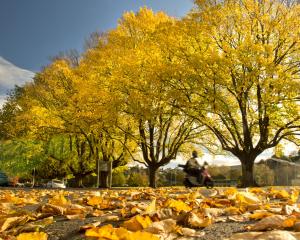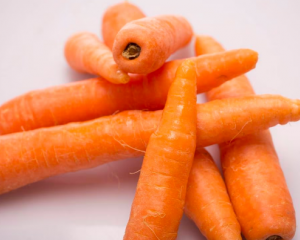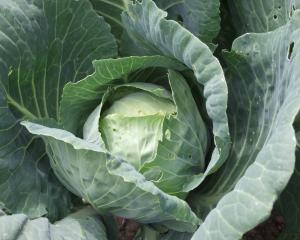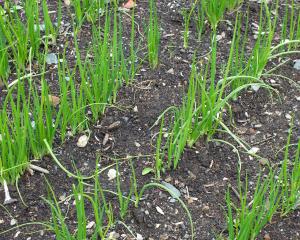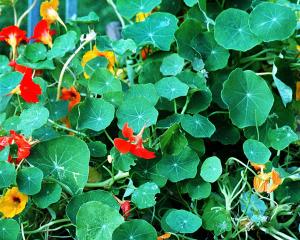At this time of year, potatoes can be earthed up easily when the soil has been softened by rain.
Potatoes can be grown successfully without this step but hoeing the soil from between rows on to the bases of the plants prevents the tubers being exposed to air and turning green.
Green potatoes have high concentrations of a glycoalkaloid poison, solanine, and should never be eaten. Mounding up should be done before the plant tops are too large and likely to be damaged during the process. Main-crop potatoes such as Red Rascal, Heather and Agria can be planted and good crops should be produced in all soils that retain moisture through to late summer.
Onions sown now will not grow to full size, but will produce bulbs large enough for pickling. Make the ground rich and firm and sow in shallow drills. Autumn-sown onions should be growing well and will be helped along by an occasional watering with liquid manure and a top-dressing of sulphate of potash.
Runner beans live up to their name and growth should now be rapid. If not planted against a fence or trellis, or on a bean tepee, they will have to be staked. Put tall (2m) sticks on either side of the row and tie string along about halfway up and also near the top. Earthing up on either side of the plants helps them stay in place in windy conditions. Keep the roots moist and cool with plenty of water. Lawn clippings can be used as a mulch but make each layer a thin one (1cm) as otherwise too much heat will be generated. Peas can be staked but growing against netting is more effective for tall varieties such as Alderman.
Staple netting to several tall, strong stakes, leaving the lower 40cm or 50cm below the netting. This makes a movable fence that can be used for peas year after year. As the first tiny broad bean pods appear, the tip of each stem can be nipped out to help give a better crop. The green tips of the plants can be eaten in stir-fries.
Rhubarb plants will weaken if too many stems are picked at once, so spread picking and take no more than a third of the leaves at any time.
Rhubarb likes cool roots and is a greedy plant, a gross feeder in gardening jargon, so keep it well watered in dry weather, and work some compost around the base before watering.
• Flowers
Removing dead heads from rhododendrons and azaleas is a tedious, sticky chore but will pay dividends with better displays next spring.
Sweet peas sown now will bloom late in the season. As well as mixed packets, usually sold by colour (Shades of Blue, Shades of Red), some seed companies have named modern varieties (pale blue Charlies Angel, cream Cathy and deep blue Oxford Blue) as well as heritage sweet peas (Cupani, Painted Lady, Prince of Orange and Barry Dare, for example).
In general, the heritage varieties have better perfume but smaller flowers. Sweet pea seed can be sown in rich soil, then seedlings thinned to 10cm-12cm apart. Less wasteful is to sow them in seed boxes and plant out when the first pair of true leaves appears. Keep plants watered or they will produce small, miserable flowers on short stems.
Primulas, polyanthus, primroses and auriculas should be divided as soon as the plants have finished flowering. Prepare ground for them by adding rotted horse or cow manure or compost. If the soil is heavy clay, add coarse river sand to help it drain better.
The plants like to be firmly fixed in the soil with the lower leaves just above the surface. Old plants tend to lift themselves out of the soil and will fail to flower freely if left undivided too long.
Wallflowers (Cheiranthus) are old-fashioned flowers with a distinctive sweet fragrance.
Seed sown now should give plants sufficiently developed to give flowers in spring.
Often described as biennials (having a two-year life cycle), they are actually perennials and can be kept going for years if deadheaded during the flowering season and cut back by half after flowering. Like most spring-blooming shrubs, lilacs can be pruned when flowering has finished.
A mulch of decayed manure, mixed with some garden lime, will improve lilacs. Wisteria can also be pruned now.
• Fruit
Even in a tiny garden, space can be found for strawberries.
Tall planters with holes on the sides can be decorative as well as useful. Stones or broken bricks at the bottom of the container help keep tall pots stable and ensure good drainage. Potting mix is put in to just below the first holes and the plants positioned to poke out of the holes. Add more potting mix and strawberries, finishing with two or three on top.
The containers should be kept well watered.
In a garden bed, strawberries that have flowered should have straw or dry pine needles spread under the plants so the berries will be kept clean and dry. The covering also helps conserve moisture and warmth, smothers young weeds and eventually rots down.


